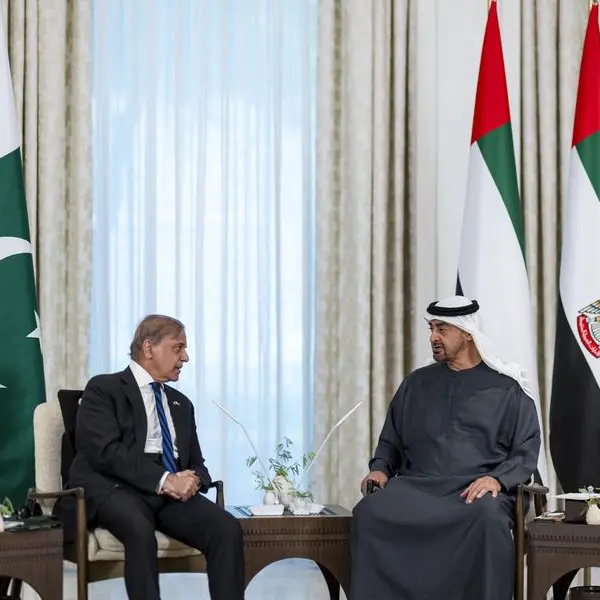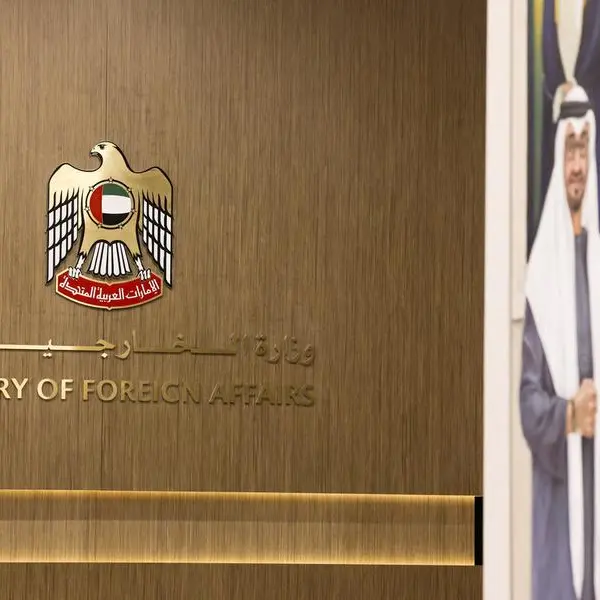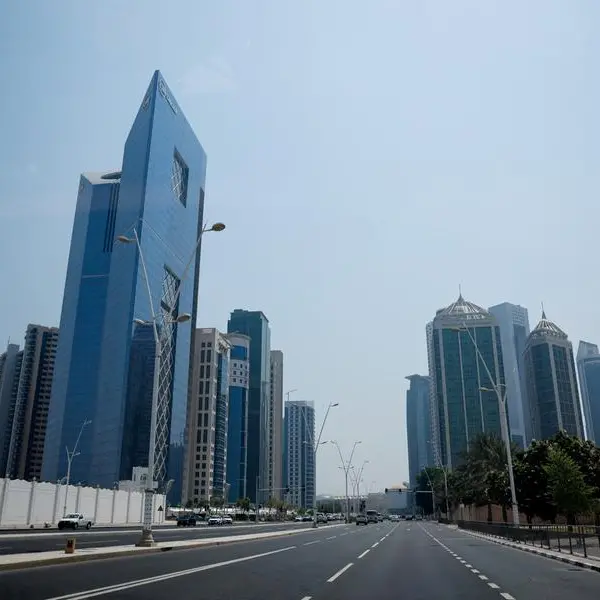PHOTO
The GCC banking sector witnessed the initial impact of higher lending rates during Q3-2023 as credit facilities reported by listed banks in three out of six countries in the region declined as compared to Q2-2023, says Kamco Invest.
Nevertheless, aggregate lending at the GCC level showed a growth of 1.5% backed by resilient lending growth in Saudi Arabia and UAE while listed banks in Qatar showed a marginal growth, says the regional non-banking financial powerhouse headquartered in Kuwait.
The growth was mainly led by a robust projects market pipeline as well as government efforts to reduce the impact of higher interest rates.
Aggregate gross loans
Aggregate gross loans for GCC-listed banks reached a new record high of $1.95 trillion at the end of Q3-2023. The q-o-q growth stood at 1.5% or $28.9 billion. Similarly, aggregate net loans showed a slightly higher growth of 1.6% during the quarter to reach $1.85 trillion. The y-o-y growth was a strong 6.8% for both net loans and gross loans. On the liquidity front, customer deposits increased at a similar pace of 1.5% q-o-q to reach $2.34 trillion after a decline in customer deposits in Qatar, Bahrain and Oman was more than offset by higher deposits in the rest of the markets.
The net impact of almost equivalent growth in lending and deposits was a slight growth in the aggregate loan-to-deposit ratio that reached 79.1% at the end of Q3-2023.
Meanwhile, total net income was up for the third consecutive quarter to reach $13.8 billion in Q3-2023 registering a q-o-q increase of 1.3% supported by both higher net interest income and non-interest income during the quarter.
Higher interest rates supported net interest income during the quarter that was further supported by a decline in loan loss provisions from $2.7 billion in Q2-2023 to $2.3 billion in Q3-2023. However, an increase in operating costs by 14.0% q-o-q during Q3-2023 partially dented the overall growth.
On the other hand, reports from most global economies have shown borrowers getting squeezed due to the high interest rate environment with central bank policy rates at the highest levels in more than two decades.
According to the IMF, credit risk has increased as individual and business borrowers face higher debt service costs resulting in higher risk of defaults. This has especially affected the leveraged loan market with higher reported defaults, and this may worsen in the coming years as around $5.5 trillion worth of corporate debt is due in 2024.
Lending up for the second consecutive quarter
Data from GCC central banks showed that despite higher interest rates, credit facilities offered by banks in region continued to show growth during Q3-2023, barring Bahrain that showed a marginal decline as compared to Q2-2023. This reflects resilient economic indicators in the form of a strong project pipeline in the region while consumer confidence remained intact.
Data from MEED Projects showed that YTD-October-2023 project awards in the GCC reached the highest level in eight years at $150.9 billion. Similarly, manufacturing activity data from Bloomberg (Markit Whole Economy Surveys) showed PMI figures stayed strong during the quarter above the growth mark of 50 for Dubai, Qatar, Saudi Arabia and UAE at the end of Q3-2023.
The manufacturing activity in Saudi Arabia remained robust with PMI at 57.2 points during September-2023 and accelerated during October-2023 at a slightly higher 58.4 points. UAE also boasted strong PMI figure of 56.7 points in September-2023 followed by 57.7 points during October-2023. Qatar, meanwhile, has shown a sharp slowdown in growth during October-2023 with PMI at 50.8 points as compared to 53.7 points in September-2023.
Data from Saudi central bank showed growth in lending for the 19th consecutive quarter in Q3-2023. Aggregate bank credit grew by 2.93% q-o-q during Q3-2023, the fastest pace of growth in the GCC, to reach SR2.5 trillion backed by a broad-based growth in almost all sectors of the economy. Elsewhere in the GCC, growth remained marginal at less than 1% while in Bahrain lending declined by 0.3% during Q3-2023.
The credit sentiment survey in the UAE also pointed to stronger loan growth and rising willingness of financial institutions to extend credit backed by positive economic outlook and strong real estate market. The survey showed that lending remained strong across all loan categories mainly led by large firms, locals, GREs, and SMEs. In terms of sectors, the manufacturing sector witnessed strong growth along with retail and wholesale trade sectors, construction, and property development.
Listed bank lending growth shows wider variations
Aggregate lending by GCC banks continued to show growth during Q3-2023 backed by growth in three out of six markets in the GCC. Aggregate gross loans reached a new record high of $1.95 trillion, up 1.5% q-o-q and 6.8% y-o-y, mainly led by strong growth in banks in Saudi Arabia and UAE and marginal growth in Qatar. Saudi-listed banks once again reported the strongest q-o-q growth in lending at 2.8% to reach $658 billion at the end of Q3-2023.
UAE-listed banks closely followed with a growth of 2.4% in gross loans that reached $548 billion followed by Qatari-listed banks with a growth of 0.3% to reach $375 billion. Banks in Oman, Bahrain and Kuwait, meanwhile, reported decline in gross loans during the quarter. The biggest q-o-q decline was seen in Oman at 3.3% with gross loans reaching $64 billion followed by 0.6% decline in Bahrain and a marginal decline of 0.2% in the case of Kuwaiti banks.
In terms of type of banks, Islamic banks recorded a faster growth in lending during the quarter at 1.7% to reach gross loans of $606 billion while conventional banks recorded a growth of 1.4% to reach $1.34 trillion. A recent report from Moody’s said that Islamic banks are expected to benefit from the ongoing economic diversification efforts resulting in higher profit margins over the next 12 to 18 months vs. conventional banks in the region led by an inherent margin advantage and a focus on household financing and the retail segment.
The report highlighted that the strong asset quality of GCC Islamic banks is expected to continue, and their strong capital and liquidity positions is expected to help these banks to meet the growing demand for Islamic banking services.
The trend in net loan growth was almost in line with gross loan with aggregate net loans at $1.85 trillion at the end of Q3-2023 registering a q-o-q growth of 1.6%. The growth was led by higher net loans recorded in Saudi Arabia, UAE and Qatar partially offset by a slide in lending registered by banks in Oman, Bahrain and Kuwait. A report from Fitch Ratings showed that conditions for banks in the region remain optimal as most loan books reprice fairly quickly while the low-cost of current and savings account deposits represent a significant source of banks’ funding.
Deposit growth stays positive
Total customer deposits reported by listed-GCC banks continued to show growth for the tenth consecutive quarter during Q3-2023 to reach a new record high of $2.34 trillion as compared to $2.31 trillion at the end of Q2-2023.
However, as seen in gross loans, the trend in customer deposits also varied within the region with three out of six countries showing higher q-o-q deposits while the remaining three registered declines.
UAE-listed banks reported the biggest q-o-q growth in Q3-2023 with aggregate customer deposits reaching $749 billion, regaining the top spot in the GCC. Saudi-listed banks were next with a growth of 1.7% with total deposits reaching $742 billion followed by Kuwaiti banks with a marginal growth of 0.2% to reach $302 billion.
On the other hand, decliners included Qatar and Bahraini banks with q-o-q decline of 0.8% followed by a marginal decline of 0.2% for Omani banks. Islamic banks once again outpaced conventional banks after recording a higher q-o-q growth of 2.2% while conventional banks grew deposits by 1.3% during the quarter.
Loan-to-deposit ratio has significant room for expansion
The aggregate loan-to-deposit ratio for the GCC banking sector continued to remain below the 80% mark for the sixth consecutive quarter at the end of Q3-2023 to reach 79.1%, a marginal improvement from 79.0% recorded at the end of Q2-2023.
The flattish performance reflected an almost equivalent growth in lending and customer deposits during the quarter. At the country level, the performance was mixed with three out of six countries witnessing higher loan-to-deposit ratio. Saudi-listed banks showed the biggest improvement in the ratio with an increase of 100 bps to reach 86.9% at the end of Q3-2023, the third highest in the GCC. Qatari banks also showed a growth of 80 bps with the ratio reaching 89.0%, the highest in the GCC overtaking Omani banks that was leading in Q2-2023 but reported the biggest q-o-q decline during Q3-2023. Banks in Bahrain showed marginal improvement during the quarter.
Net interest income sees strong growth in most markets
Aggregate net interest income reported by banks listed in the GCC witnessed growth for the second consecutive quarter to reach a record during Q3-2023. Total net interest income reached $21.1 billion during Q3-2023 from $20.0 billion in Q2-2023, registering a growth of 5.6%. The increase in Q3-2023 came despite cost of funds reaching one of the highest levels on record at 3.7% as compared to 3.2% recorded in Q2-2023.
In terms of y-o-y growth, the growth in net interest income was strong at 13.2% reflecting an increasing impact of consecutive rate hikes implemented by banks in the GCC following rates hikes in the US. The q-o-q trend in the GCC remained largely positive with only Omani banks seeing a decline during the quarter while the rest of the GCC aggregates showed growth. Qatari banks recorded the biggest q-o-q increase in net interest income during Q3-2023 at 10.8% to reach $3.5 billion followed by Kuwaiti and UAE-listed banks with growth of 6.9% and 5.5%, respectively. Saudi banks were next with a growth of 3.8% to reach net interest income of $7.0 billion, in line with the aggregate for UAE-listed banks.
Topline growth at three-quarter high
Total bank revenue for GCC banks once again registered q-o-q growth during Q3-2023 by 5.3% to reach a new record high of $30.7 billion as compared to $29.2 billion during Q2-2023. A growth in aggregate net interest income as well as non-interest income supported the growth in total revenues. The q-o-q increase was led by a broad-based improvement in revenues across the GCC during the quarter, barring Omani banks that reported a decline of 1.1% during the quarter. Qatari banks reported the biggest increase during the quarter at 9.2% followed by Kuwaiti and UAE-listed banks with growth of 7.9% and 5.1%, respectively. Saudi-listed banks also reported a healthy q-o-q growth of 3.5% during Q3-2023.
Aggregate non-interest income witnessed growth for the fourth consecutive quarter backed by growth in most countries in the region. Total non-interest income reached a new record high of $9.6 billion during Q3-2023, registering a q-o-q increase of 4.1% and y-o-y growth of 29.8%. Aggregates for all the GCC countries showed growth barring Bahraini banks that reported a double-decline of 14.6%.
Operating costs witness steep increase in Q3-2023
After remaining subdued for the previous seven quarters at the sub-40% mark, the cost-to-income ratio for GCC banks increased by 80 bps during Q3-2023 to reach 40.1% vs. 39.2% during Q2-2023.
The increase was broad-based as seen from growth in the ratio for five out of six country aggregates during the quarter. Only Omani banks reported a decline in the ratio, albeit marginally by 20 bps, although Omani banks continued to report one of the highest cost-to-income ratio in the GCC at 43.9%. Qatari banks reported the lowest ratio of 35.9% despite reporting the biggest q-o-q jump of 200 bps during Q3-2023. Saudi and UAE-listed banks followed with the ratio at 37.9% (+110 bps q-o-q increase) and 40.7%, respectively. Total operating expenses was one of the highest on record for the GCC banking sector at $12.7 billion during Q3-2023, recording a q-o-q increase of 14.0% while y-o-y growth stood at 28.4%.
LLP continues to decline to reach 18-quarter low level
Loan loss provisions booked by listed banks in the GCC declined for the third consecutive quarter in Q3-2023 after recording a double-digit decline of 14.8% to reach $2.3 billion. Provisions booked during 9M-2023 also showed a decline of 9.0% to reach $8.1 billion as compared to $8.9 billion booked during 9M-2022.
Quarterly performance of individual markets in the GCC showed a decline in most markets during Q3-2023 barring Kuwaiti banks that reported a steep increase of 56.0%. On the other hand, four out of the remaining five markets reported double-digit q-o-q declines during Q3-2023. Qatari banks reported the biggest absolute decline in quarterly provisions with a fall of $0.3 billion to reach $0.7 billion followed by Saudi-listed banks with a decline of 0.11 billion to reach aggregate provisions of $0.5 billion. UAE-listed banks booked the biggest absolute provisions during the quarter at $0.72 billion, in line with provisions during Q2-2023. Out of the 58 banks we analysed, 31 banks reported a q-o-q decline in provisions whereas 27 banks reported higher provisions.
On a relative basis, cost of risk (ratio of 12-month provisions vs. average loans) for Qatari banks was the highest at 1.02% in Q3-2023 although it improved from 1.1% in Q2-2023. The ratio was the lowest in the case of Kuwait banks at 0.3% while UAE and Saudi-listed banks showed slightly higher cost of risk of 0.65% and 0.41%, respectively.
NIM at multi-quarter high reflecting higher rates
The aggregate net interest margin reported by GCC-listed banks increased for the fourth consecutive quarter during Q3-2023, although the increase was marginal to reach 3.2%. The increase reflected elevated net interest income during the trailing twelve-month period adding additional rate hikes since the start of 2023. A smaller increase in earning assets also contributed to the growth in NIMs. The q-o-q growth in NIM was seen across the GCC banking sectors barring Oman which reported a marginal decline during Q3-2023. UAE-listed banks once again showed the biggest improvement in NIMs during the quarter with an increase of 11 bps to reach 3.53% followed by marginal single bps increase in the rest of
With the improvement, UAE once again ranked first in the GCC in terms of NIMs followed by Saudi Arabian banks at 3.23% and 3.04% in the case of Qatari banks during Q3-2023. A report from Fitch Ratings showed that the liquidity pressure on Saudi banks seen in 2022 have moderated this year, that is expected to be moderately positive for NIMs during 2H-2023.
Meanwhile, for Qatari banks, the minimal improvement in NIM reflected higher reliance on external funding as current and savings account deposits account for only 20% of sector funding, compared with over 50% in the UAE and Saudi Arabia, according to Fitch. As a result, the ratings agency expects minimal NIM improvement in Qatar during 2H-2023 and 2024.
GCC banking RoE remains elevated at record high level
Aggregate return on equity (RoE) for the GCC banking sector continued to show improvement during Q3-2023 reaching one of the highest levels over the last few years at 13.3% as compared to 13.0% at the end of Q2-2023, reaching almost pre-pandemic levels.
The ratio also improved in terms of y-o-y comparison by strong 150 bps supported by an increase in aggregate 12-month profitability coupled with a relatively smaller growth in shareholders’ equity. Total shareholder equity reached $399.6 billion at the end of Q3-2023, registering an increase of 1.6% as compared to Q2-2023.
At the country level, UAE-listed banks once again topped in the region with the highest RoE at the end of Q3-2023 at 16.5% closely followed by Saudi Arabian and Qatari banks with RoEs of 12.9% and 12.3%, respectively. The biggest y-o-y growth in RoE was also seen for UAE-listed banks at +300 bps which was mainly led by elevated TTM profits as well as a relatively smaller growth in total shareholders’ equity. ROEs for Kuwaiti banks stayed elevated at a double-digit level of 10.6% while Bahraini and Omani banks reported RoEs at 9.1% and 8.3%, respectively.
Copyright 2022 Al Hilal Publishing and Marketing Group Provided by SyndiGate Media Inc. (Syndigate.info).





















